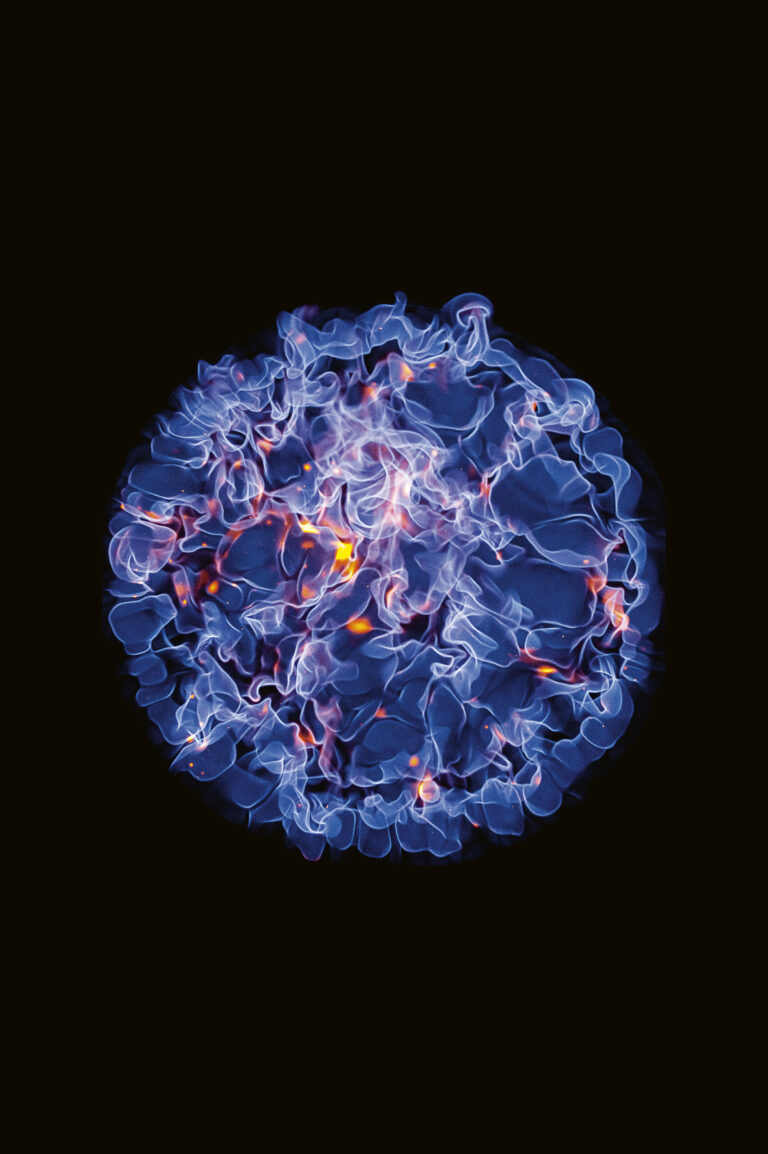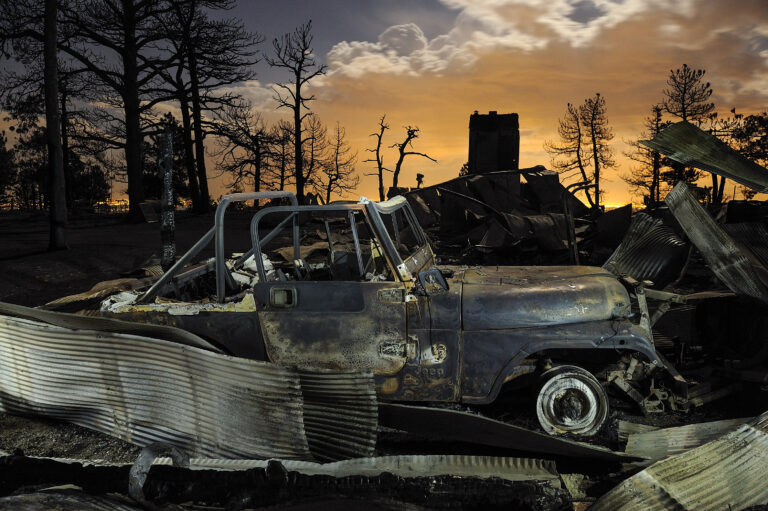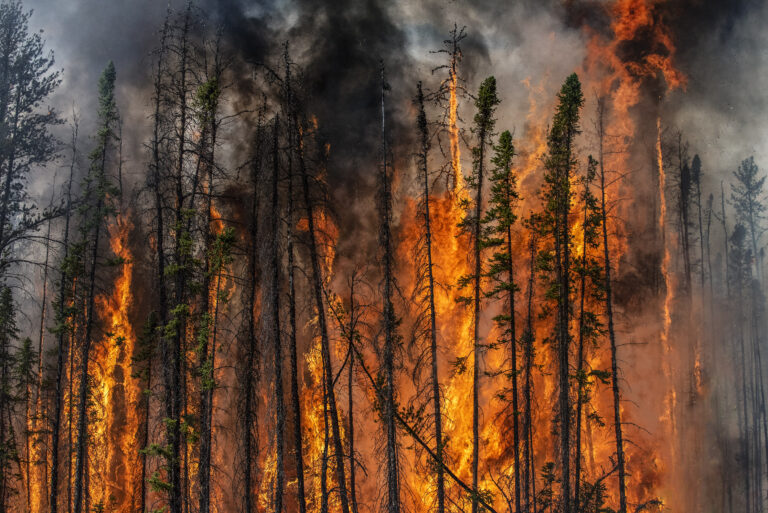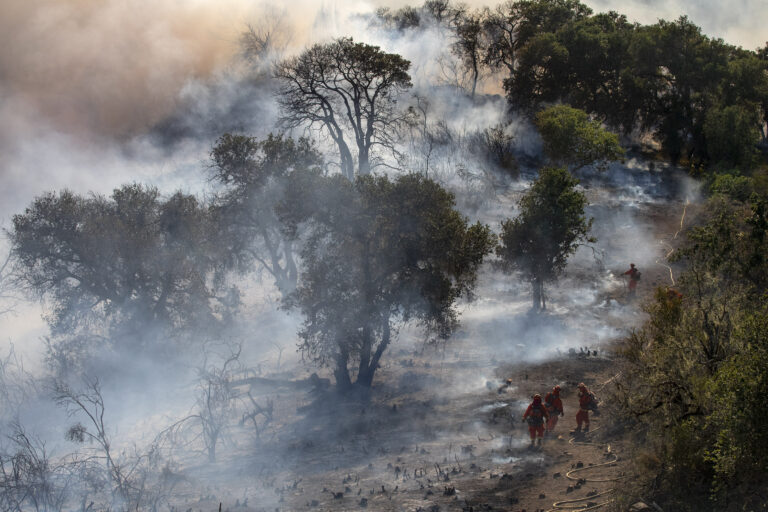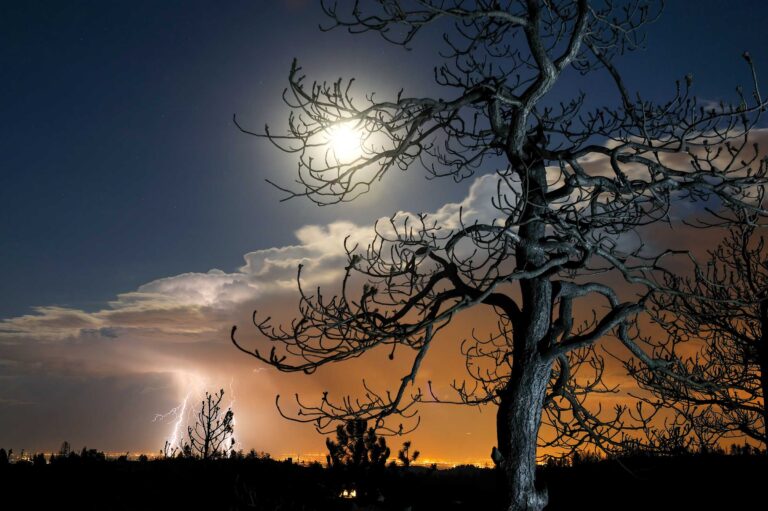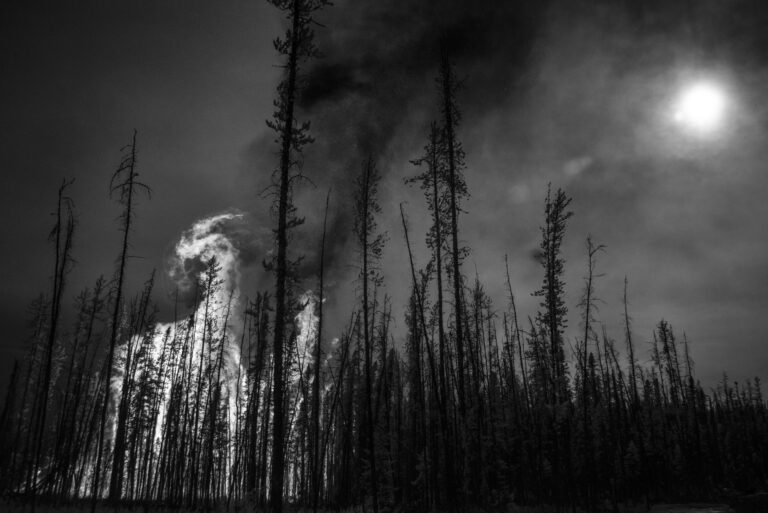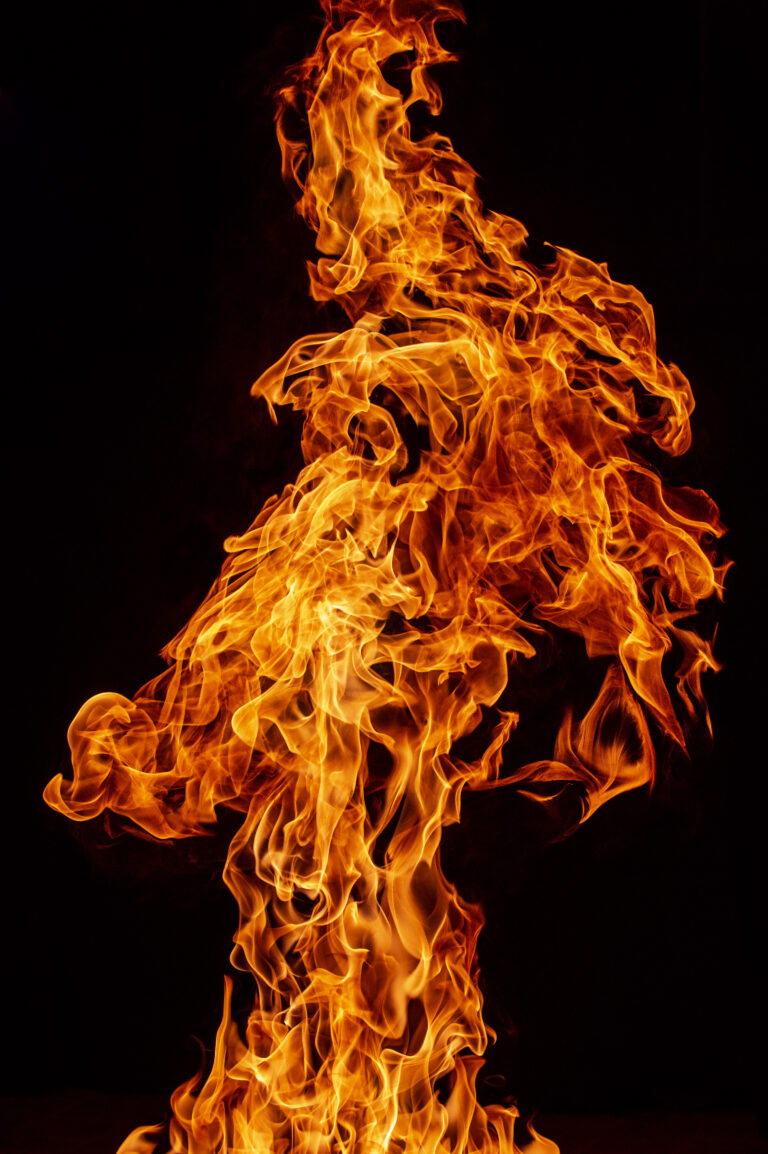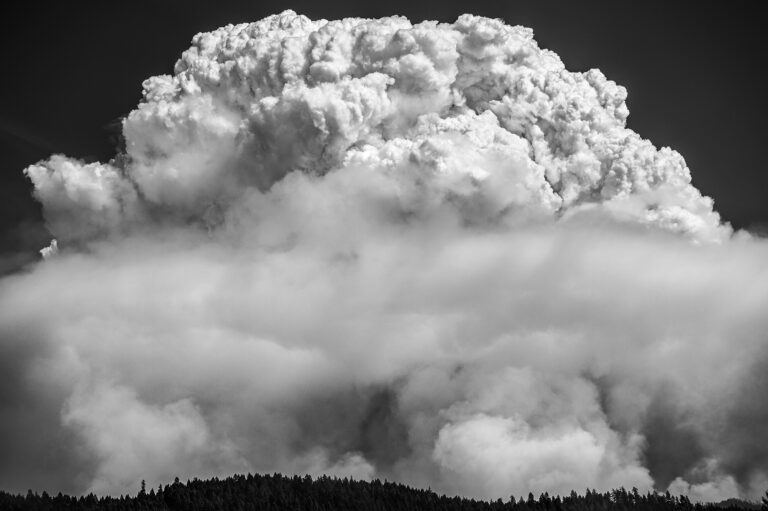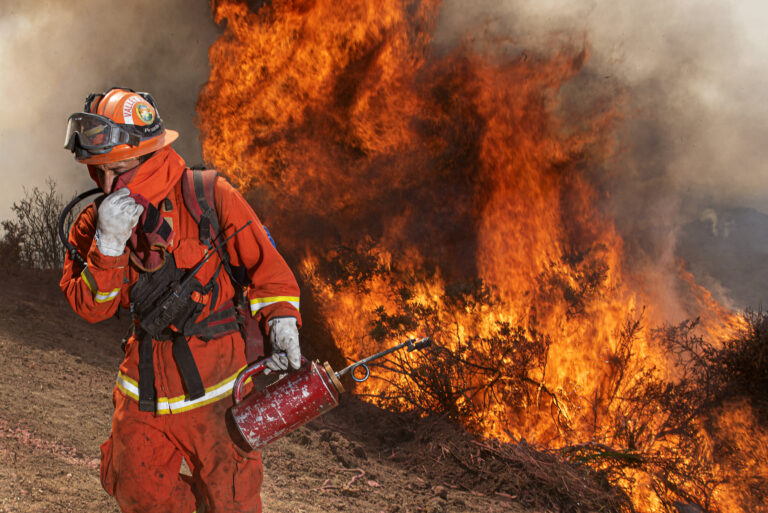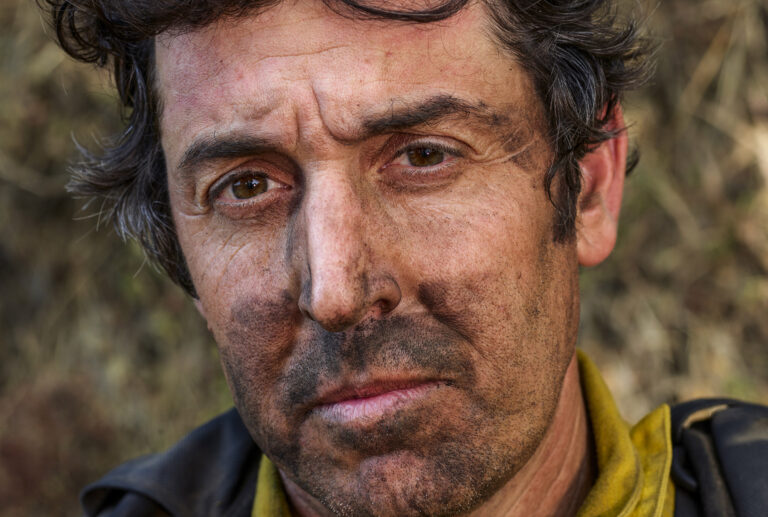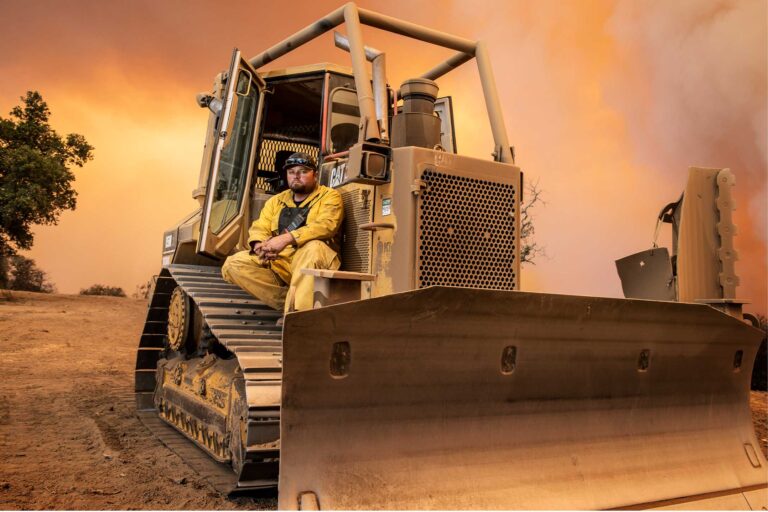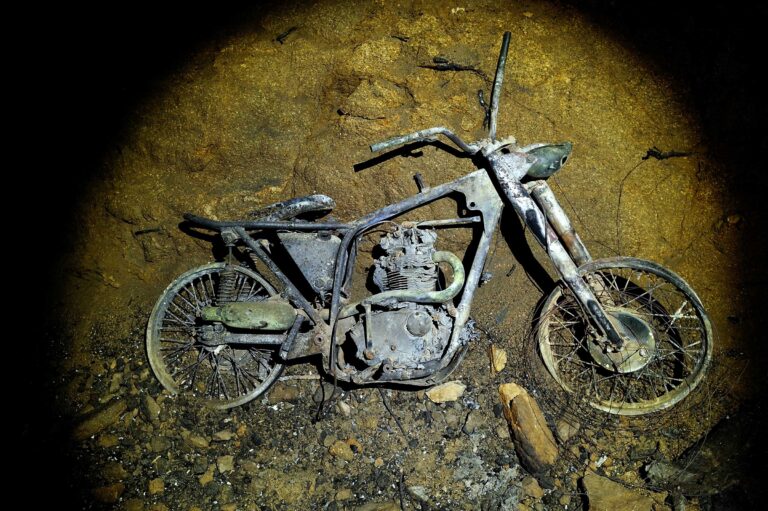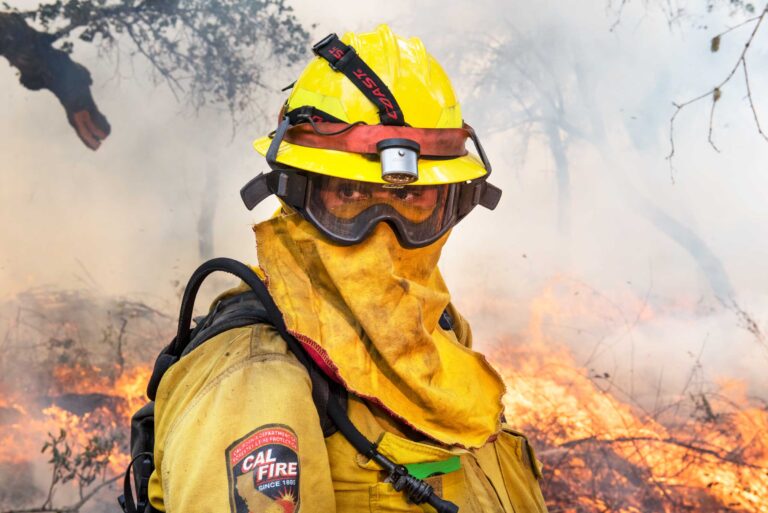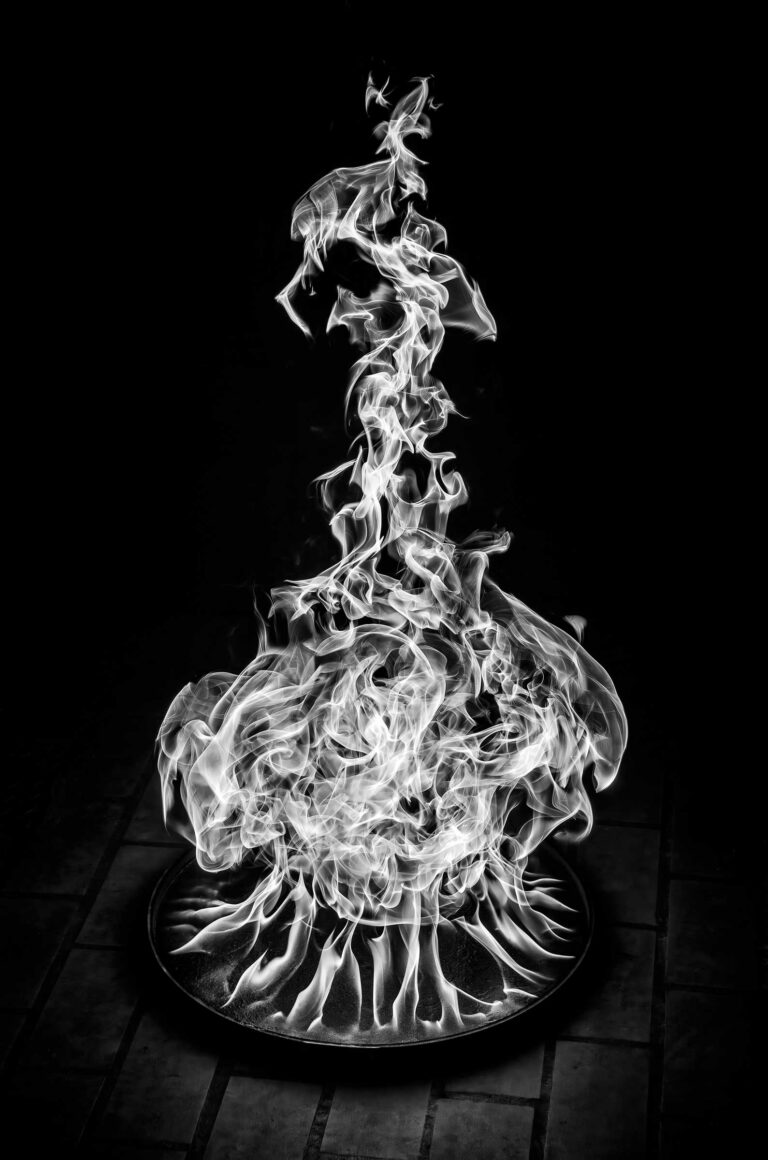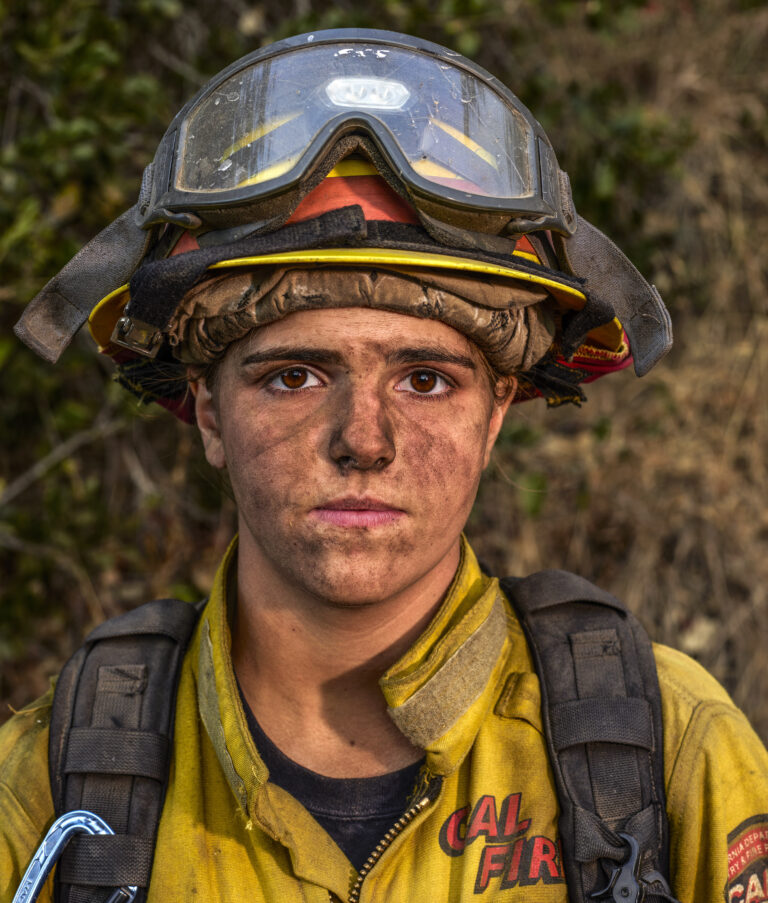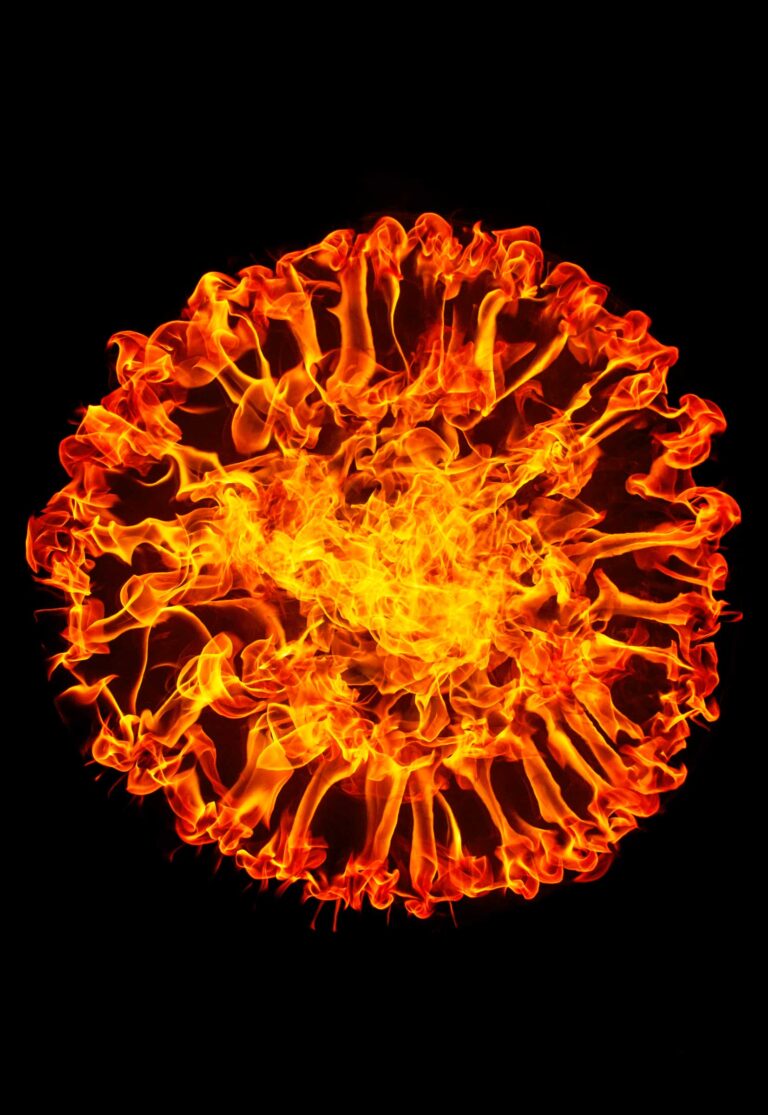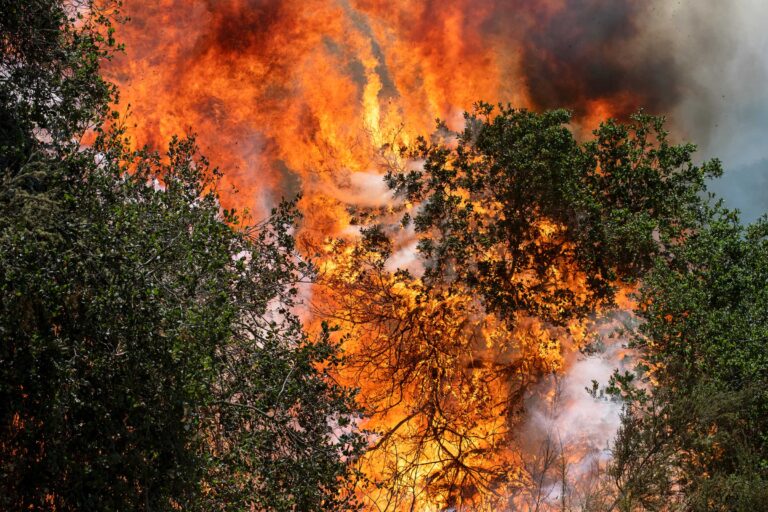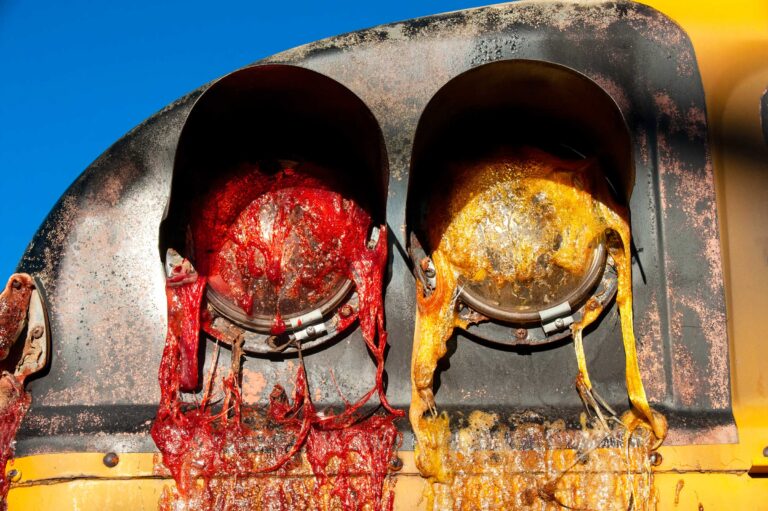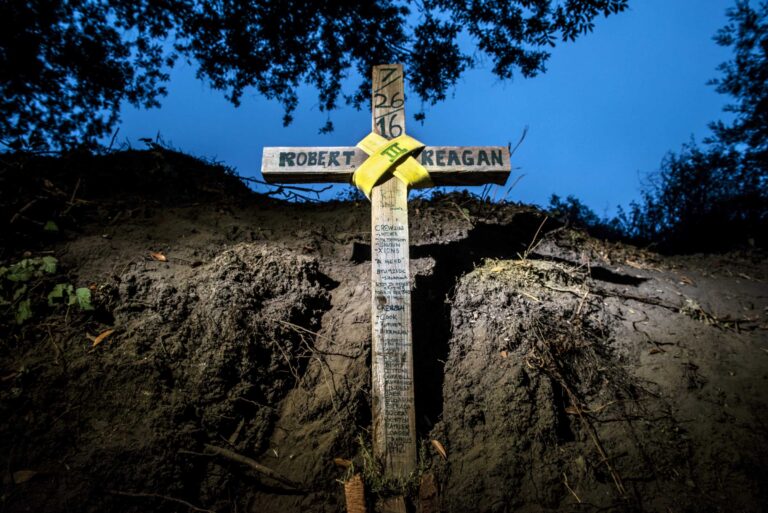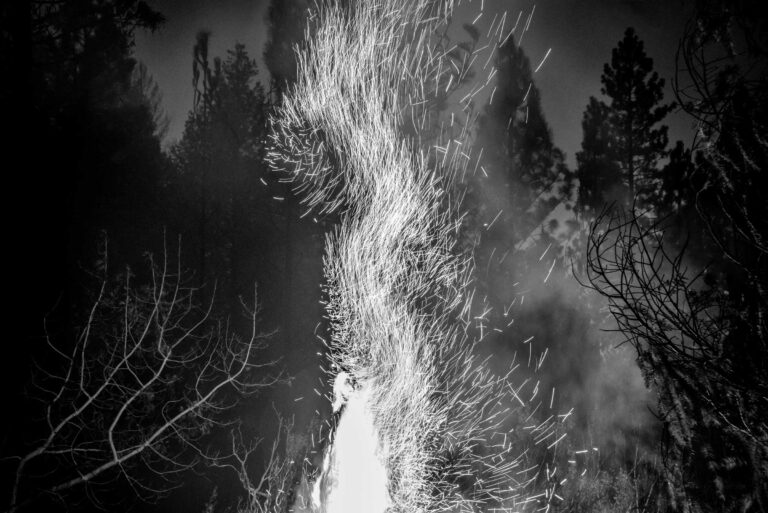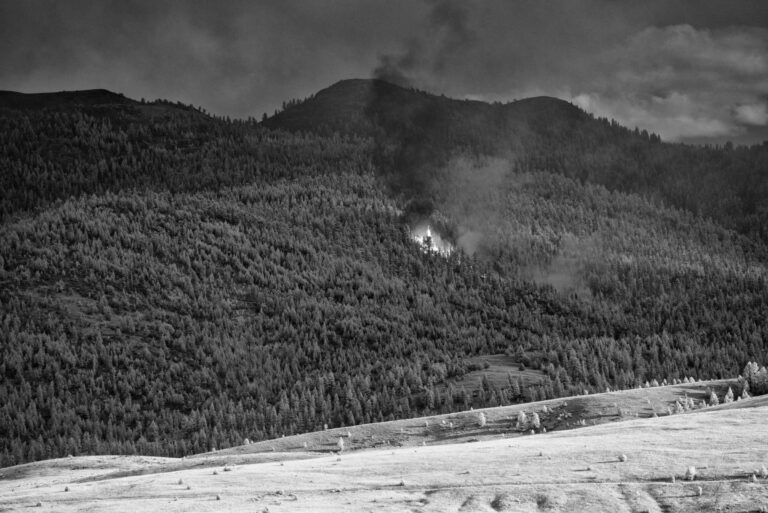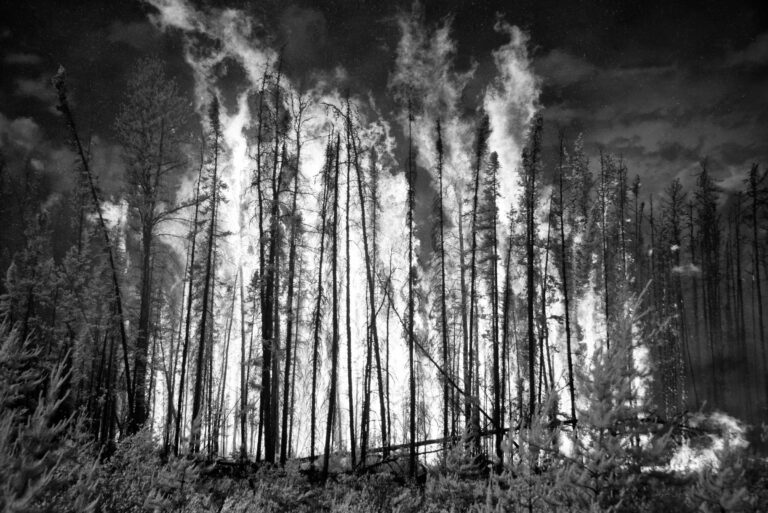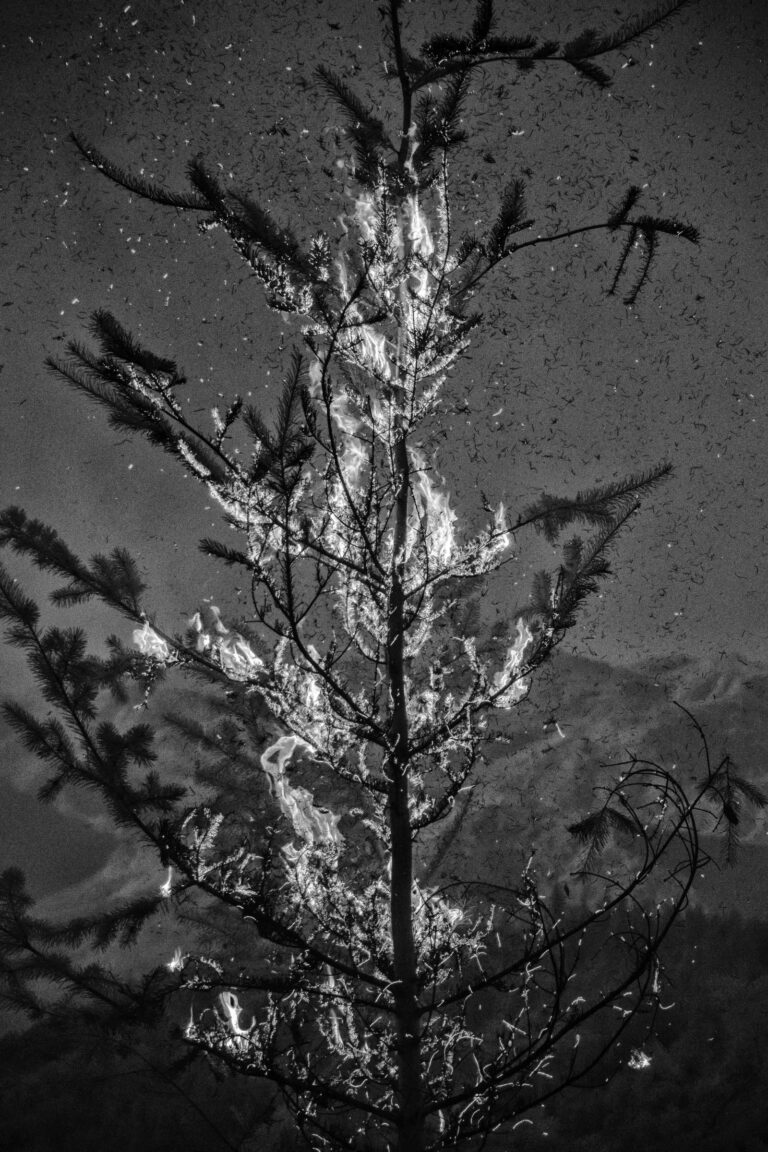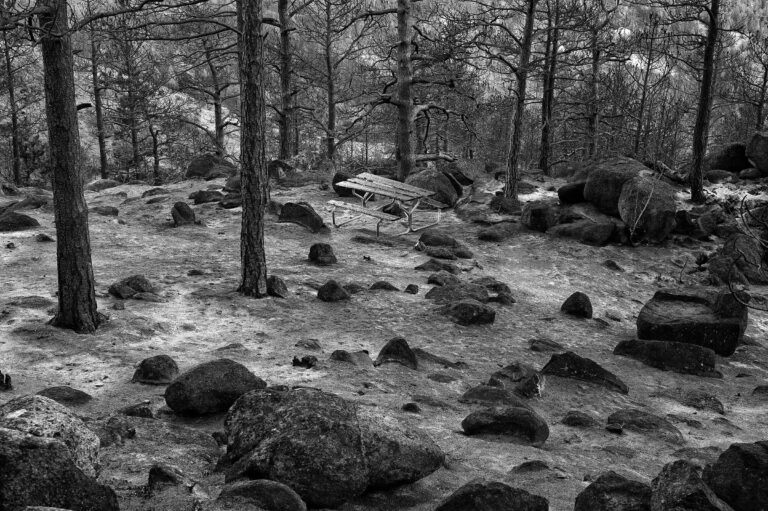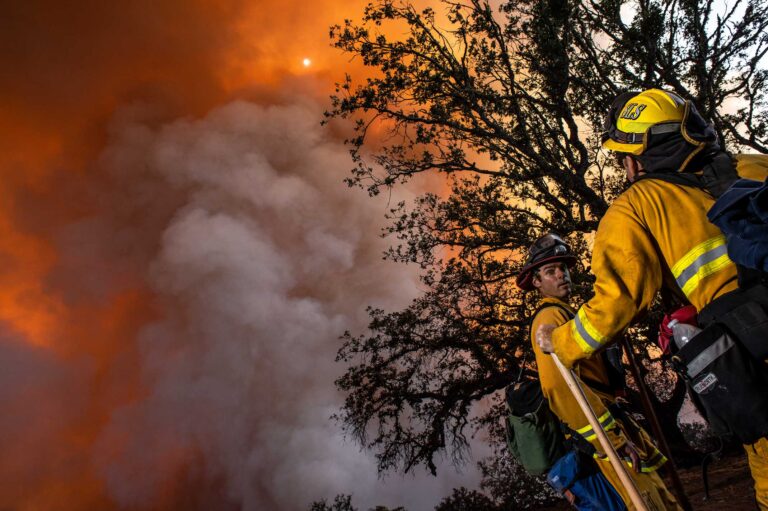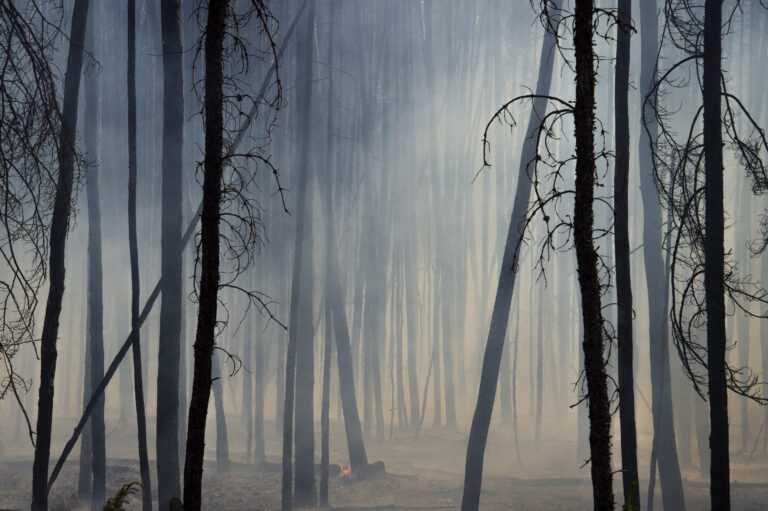From 2010 to 2017, James photographed 14 active wildfires and/or their aftermath. One of them, Colorado’s Four-Mile Canyon Fire in 2010, came within a mile of burning down his home, torching 6,181 acres and destroying 168 structures.
In order to work safely around fire and understand its behavior, James and his crew got trained as wildland firefighters. In 2016, they produced extensive coverage of the Soberanes Fire, south of Carmel, California. The blaze cost $260 million and the life of one firefighter, and was the most expensive wildland firefighting effort at the time—until a series of additional tragedies superseded it.
At the U.S. Forest Service’s Missoula Fire Sciences Laboratory in Montana, James used both infrared and conventional color cameras to explore the mythic character of flame and fire.
Great irony surrounds the relationship between wildfire and humanity. First, a century-long policy of aggressively extinguishing wildfires in the United States has made forest vegetation unnaturally dense and combustible. Second, more and more people have moved from cities and suburbia into fire-prone terrain choked with thick vegetation (a problem especially acute in California), seeking rural tranquility but placing themselves in greater peril when fires inevitably burn through. Finally, on a big blaze, hundreds of trucks, helicopters, and airplanes bring people, food, water, equipment, and chemicals into battle, while helicopters drop flaming buckets of napalm onto vegetation to starve flames of fuel. Humanity thus burns millions of gallons of gasoline, diesel fuel, and jet fuel to put out fires that fossil fuels might have caused, or at least intensified, in the first place.
